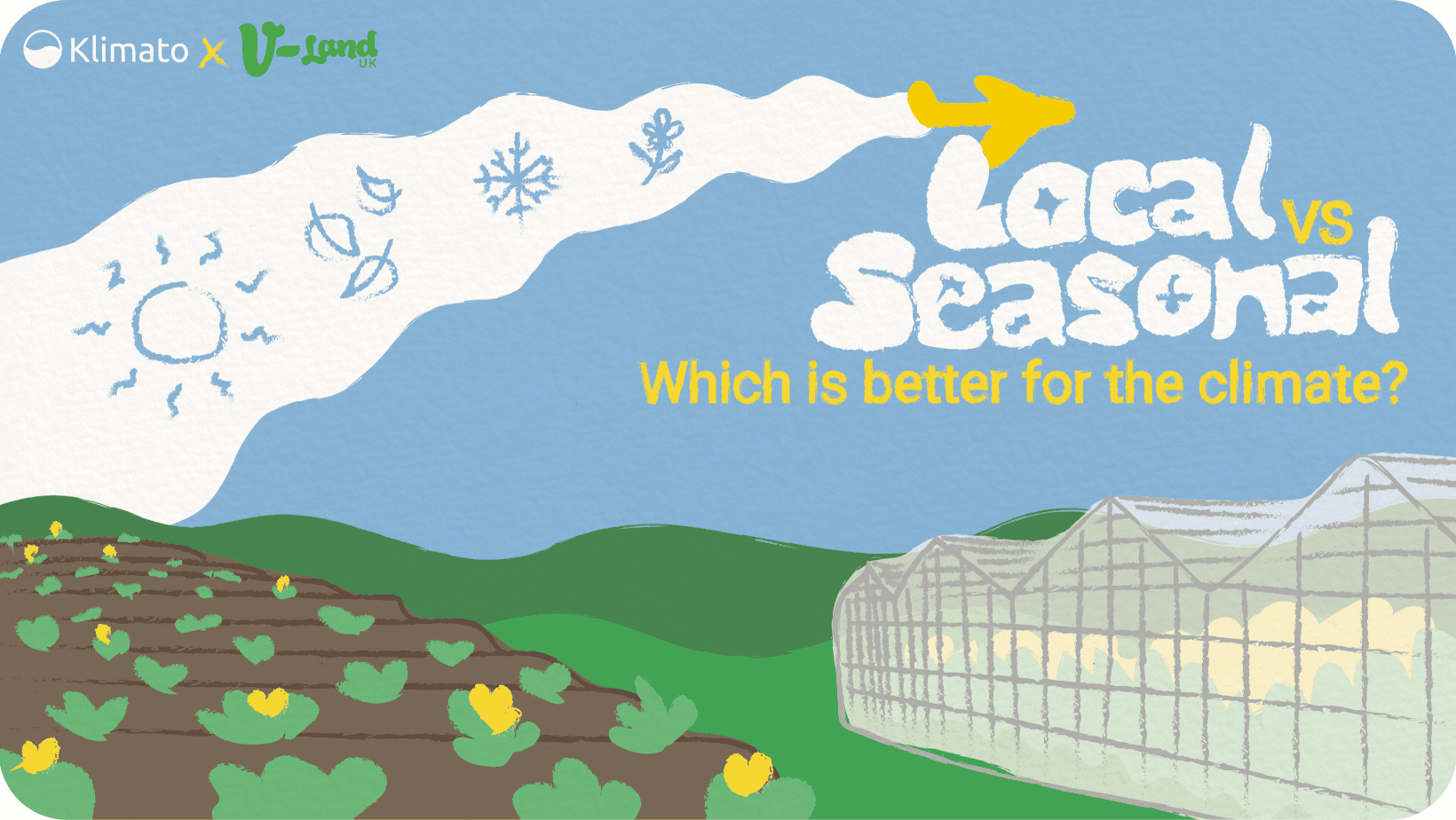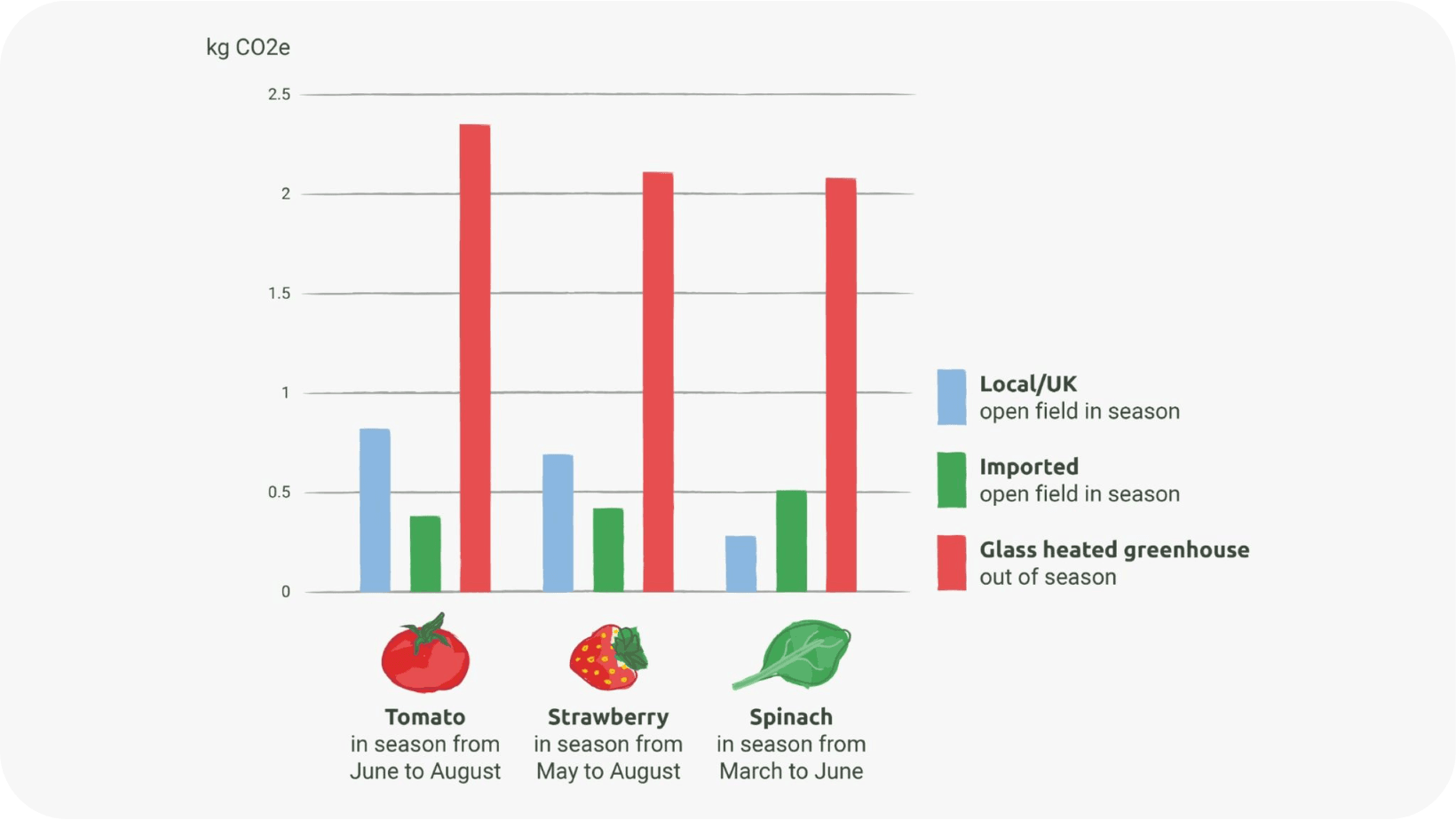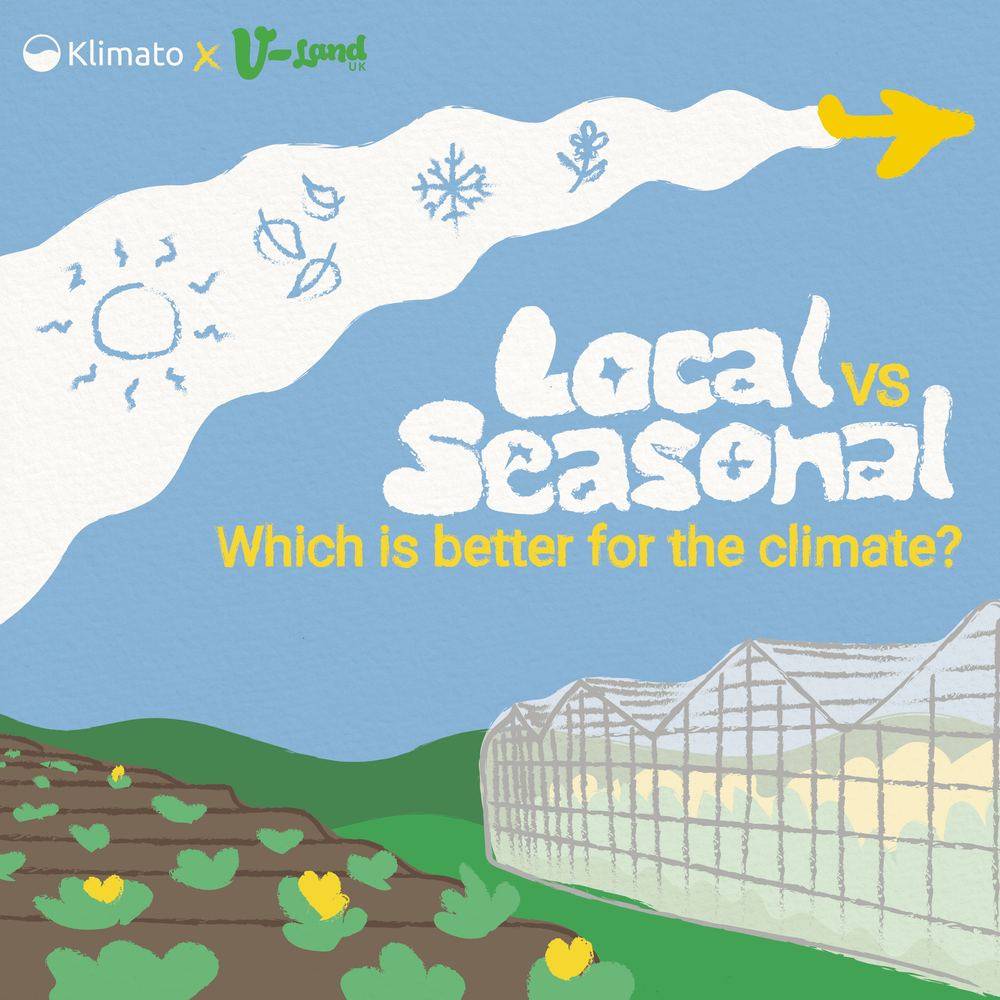Local vs seasonal food: Which is better for the climate?
Food accounts for up to 35% of the world’s man-made emissions (1). Where you source your food; whether it’s locally produced, imported or in season, plays a huge role on the climate. But which one is better?
Many consumers associate seasonal with locally produced food, but this isn’t always true. Here is an accepted definition:
Food that is produced and consumed in the same climatic zone, e.g. UK, without high energy use for climate modification such as heated glasshouses or cold storage (2).
The UK currently produces the equivalent of about 60% of domestic consumption, part of which is exported. About 54% of food on plates is produced in the UK, including the majority of grains, meat, dairy, and eggs. Domestic crops include 54% of fresh vegetables, mostly sugar beet, potatoes, and oilseeds, though only 16% of fresh fruit (3). In 2020, 93% of domestic consumption of fresh vegetables was fulfilled by domestic and European production, while fruit supply is more widely spread across the EU, Africa, the Americas, and the UK (4).
British consumers expect year-round availability, which means that import of fruits and vegetables from warmer climates such as Italy, southern France, and Spain are essential to meeting demand for out-of-season produce. British winter crops are more limited in range, being dominated by root vegetables and leafy greens.
In order to overcome the natural seasonality of fruit and vegetables, four strategies have been found by the industry.
• Protected cultivation to produce out of season (e.g., heated greenhouses).
• Import of produce from where it is in season or can be produced in non-heated greenhouses (e.g., Spain during winter).
• Cold storage of seasonal produce to consume it out of season.
• Consumption of other vegetables that are in season.

The lettuce case study
When the weather conditions don’t allow produce to grow in an open field, glass heated greenhouses are used instead. They require lower inputs (less machinery, fuel and fertilisers) in comparison to open-field operations and the yield is usually higher. However, they require the construction of pavilions using, for instance glass, and they need energy in the form of heat and electricity for both construction and maintenance. Electricity and heat generally cause an increase in greenhouse gas emissions.
Lettuce, when in season, is produced in the UK in open fields from May to October. The rest of the year lettuce could be imported from Spain where it is produced in open fields or in non-heated greenhouses. It is also produced in the UK in glass heated greenhouses (from November to April).
The carbon footprint of open field cropping in both the UK, when in season, and Spain presents similar values (Spain a little higher because of the transport to the UK): 0.33 kg CO2e/kg of lettuce VS 0.45 kg CO2e/kg of lettuce respectively. Nevertheless, they are comparable even if 2600km of transport by truck are included. The hotspots (i.e., the stages with the highest emissions), in both cases, are fertiliser production and application, fuel use and energy for irrigation. The carbon footprint of lettuce produced in glasshouses in the UK, thus out of season, can reach up to 3 kg CO2e/kg of lettuce. In this case, the hotspot is, for the 90%, the energy required for heating (5).
Here is a graph showing the differences in carbon footprint between tomatoes, strawberries and spinach grown in open fields vs in greenhouses:

Key takeaways
Local food is not necessarily more environmentally friendly than imported, seasonality is! When a produce is in season, then it should be local! Indeed, if the produce is transported by plane, the carbon footprint of these foods, even if grown in open fields, results higher than the same food produced in glass heated greenhouses. Using local produce when in season is a good strategy to reduce your carbon footprint. So go preach this to your friends and family and don’t feel guilty about buying imported goods in winter!
Klimato is a start-up with the mission to reduce the climate impact from food by helping restaurants calculate, communicate and report the climate footprint per dish. Klimato’s climate labelling guides and inspires chefs and restaurant guests to make climate-friendly choices, which coupled with a reporting function makes it easy to set goals, reduce food-related emissions and track progress to combat climate change - one meal at a time. Read more at www.klimato.co
References
1. Crippa, M., Solazzo, E., Guizzardi, D. et al. Food systems are responsible for a third of global anthropogenic GHG emissions. Nat Food 2, 198–209 (2021)
2. Foster, C., Guében, C., Holmes, M., Wiltshire, J. and Wynn, S., 2014. The environmental effects of seasonal food purchase: a raspberry case study. Journal of cleaner production, 73, pp.269-274.
3. UK Government Food Security Report 2021 (https://www.gov.uk/government/statistics/united-kingdom-food-security-report-2021/united-kingdom-food-security-report-2021-theme-2-uk-food-supply-sources) Accessed 30/06/2022
4. Ibid.
5. Hospido, A., Milà i Canals, L., McLaren, S., Truninger, M., Edwards-Jones, G. and Clift, R., 2009. The role of seasonality in lettuce consumption: a case study of environmental and social aspects. The International Journal of Life Cycle Assessment, 14(5), pp.381-391.
